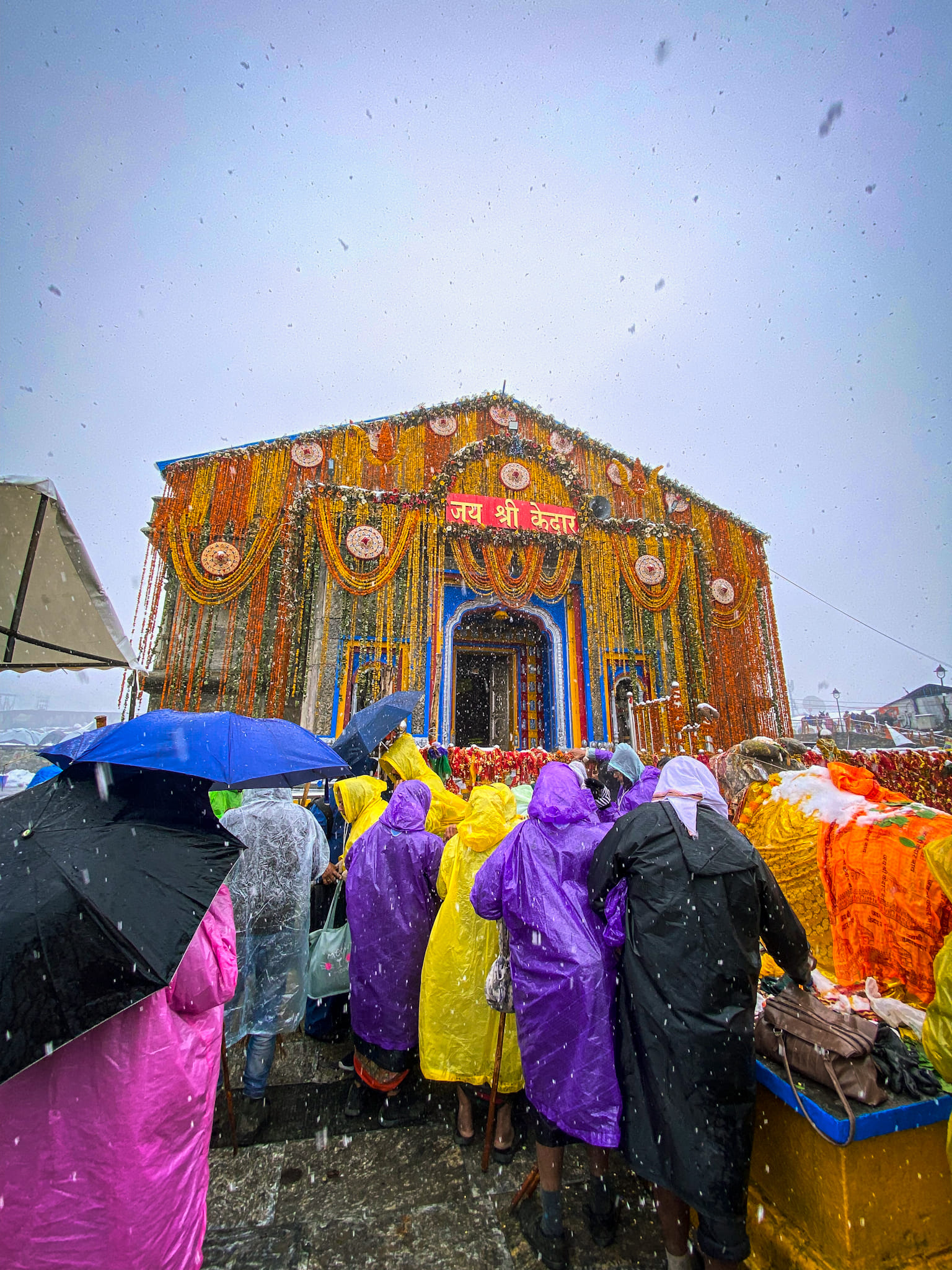Kedarnath is Lord Shiva's everlasting home, located on the slopes of the Kedar dome in the Garhwal Himalayan area of Devbhoomi Uttarakhand. The religious significance of this temple attracts tourists and devotees from all over the world when it opens on the holy occasion of Akshaya Tritiya and closes on the auspicious eve of Bhai Dooj. It is located at an elevation of 3,553 meters above sea level and by the bank of the holy river of Mandakini. The pilgrims' trek to Kedarnath is particularly difficult because it is located in a very distant place. Although a helicopter trip to Kedarnath eliminates all of the trouble, it may be an enormously pricey experience.
On the one hand, the journey to Kedarnath is difficult, but the mystical beauty and contagious spirit of devotion that envelops the pilgrims makes it all worthwhile and may even prove to be a potentially life-changing spiritual experience; after all, it is not about the destination, but about the journey. The trip to Kedarnath begins at Gaurikund and continues for 16 km on one side, taking you through the breathtaking panoramic grandeur of the surrounding valley. The whole road is paved and bordered by lines of makeshift cafes, rest stops, and so on.
If you've decided to go on this fabled yatra (which is said to have been founded by the Pandavas brothers), here's a comprehensive trekking guide that will serve as a holy grail for planning:
Route Guide for Kedarnath Trek
The entire trekking path is well-planned and quite steep when ascending. You will take the following route:
- From Sonprayag (6 kilometers), take a shared cab to Gaurikund.
- Begin your walk from Gaurikund to Jungle Chatti (4 kilometers) through Rambara Bridge.
- Continue your journey from Jungle Chatti to Bheembali (3 kilometers).
- Continue trekking from Bheembali to Linchauli (4 kilometers).\
- Continue to Kedarnath base camp (4 kilometers) from Linchauli.
- The last 1 mile of the walk from Kedarnath base camp to Kedarnath temple
If you are physically strong and work out regularly, you will be able to complete this walk in one day, departing at 2 a.m. and returning at 5 p.m.
Remember not to overwork yourself. Take stops in between treks to collect your breath if you feel yourself gasping for air or breathing excessively. Do not push yourself above your physical limits or you will seriously injure yourself.
Kedarnath Weather Guide
Because of its high height, the Kedar Valley sees typical high-altitude weather. Remember that no matter what time of year you travel, the nights are exceedingly chilly.
Summer - This is the most opportune time for you to hike to Kedarnath. The sky is clear, and the temperature is comfortable and excellent for strolling. The temperature fluctuates from 20 to 10 degrees Celsius, making it an ideal time to hike up to Kedarnath.
Monsoon - This is not an excellent season to visit not only Kedarnath but also anywhere in the highlands. From June through August, the entire region is blanketed in heavy rain showers, which can be devastating in the form of landslide events and, in the worst-case scenario, cloud bursts and flooding. Tourism drops during this period, but you may find a few days of nice weather by checking the weather and planning your trip around that time to escape the crowds. However, you must prepare carefully and exercise extreme caution.
Winter - Kedarnath's winter season lasts from October to April. The terrain becomes entirely blanketed in snow, making walking difficult. The temple's gates are likewise closed, making the territory completely inaccessible. There is no use in going to Kedarnath at this time.
Frequently Asked Questions
Q1. Is There Any Medical Aid Available?
Ans. Medical assistance and other sorts of first aid services are provided at several locations such as Linchauli and Kedarnath base camp. A tiny government hospital is also located around 200 yards away from the Kedarnath shrine. There are also police checkpoints at regular intervals where you may clear your worries.
Q2. Where There Any Accommodation Available on the Trek?
Ans. If you are unable to finish the journey in one day, you can locate acceptable lodging at Gaurikund. Linchauli also includes a GMVN lodge, with rates ranging from Rs. 500 to Rs. 2,000. Various lodges may provide you with a place to stay for the night. I'd like to remind you that these are basic lodges that are closed for most of the year, so don't anticipate high-class luxury facilities.
Q3. Is Kedarnath Trek Safe?
Ans. A physically healthy individual will take around 7 hours to get from Gaurikund to Kedarnath. Many individuals are concerned about this after the terrible flooding catastrophe in 2013. However, there is no need to be concerned because the government has now offered long-term solutions to the difficulties, one of which is the erection of a perimeter wall around the temple, which acts as important protection.
Q4. What Should I Pack for Kedarnath Trek?
Ans. You are only permitted to bring a small backpack and minimal baggage containing just the necessities. Some must-pack items include a torch light with spare batteries, a BSNL SIM card, umbrellas and raincoats, dry fruits, a water bottle that can be refilled at rest stops, chocolates to use as energy boosters, medicines, and a first aid kit, good quality winter wear such as an extra shawl or sweater in case of emergencies, and so on.
Q5. When Do the Trekking Routes Open?
Ans. On the auspicious festival of Akshaya Tritiya, the temple gates are opened for worshippers to have Darshan. However, some individuals choose to arrive a day or two early to be among the first to see Lord Kedar. The pathways are available for 6 months before closing down on Bhai Dooj, the Hindu New Year.
Q6. Is the Kedarnath Trek Easy?
Ans. This walk mostly draws those between the ages of 25 and 50 who are looking for a spiritual adventure. It is not a difficult walk, but it is not easy either. Throughout the Yatra, the environment varies considerably, from steep ascents to flat plains and hairpin curves at high heights. One must be physically well enough to accomplish it; else, they may face major health problems.











0 Comments